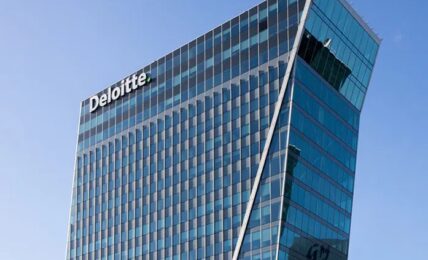By: Sammy Lakshmanan, Partner, PwC and Yvette Schmitter, Partner, PwC
Companies have important roles to play in not only enabling a people-led, tech-powered society but also decreasing the impact on the environment – in fact, 91% of business leaders believe their company has a responsibility to act on ESG issues. More than a third (and growing) of the world’s largest public companies have pledged to reach net zero by 2050. With commitments on the record, companies need to be transparent with their stakeholders about their goals, achievements, and progress which can enhance long-term value and help build trust.
However, there’s a saturation point to moving the needle and making progress on environmental sustainability. Finding the balance between energy security and greenhouse gas (GHG) reductions has likely never been more difficult. To enable impactful, meaningful, and long-lasting change, companies should balance the bottom line with the green line.
Environmental risk is an industry-spanning disruptor that most companies likely didn’t anticipate, making some existing response systems ineffective. The same change playbook companies have traditionally relied upon, may no longer manage environmental risks prompting them to explore new strategies. To successfully balance the bottom line with the green line, companies, and their leaders should remember: they are not the product they make, but the problem it solves.
Making a paradigm shift in approaches to environmental risk while delivering meaningful impact over the long term will be a vital business practice across industries in 2023 and beyond. However, the challenge may be managing the transition profitability, without which innovation and survival likely won’t be possible regardless of the strength of an organization’s ESG credentials. At its core, this is the complexity of ESG – it is not zero-sum.
There are six key steps to help companies start to balance their bottom line with the green line:
Strategy: Create a long-term strategy supported by proactive foundational changes that consistently consider and incorporate sustainability in every process–ultimately, this is a business topic and critical to doing business now and in the future.
Stakeholders: In a multi-stakeholder environment, companies have a responsibility to a community of people–confirm ESG processes are front and center and not just because of stakeholder demands. Remember, consumers are a big driver of ESG policy as well and the majority think companies should be actively shaping ESG best practices
Efficiency and Climate Resiliency: Use technology to increase visibility and transparency to confirm maximum integrated, end-to-end energy and renewable energy efficiency.
Value Chain Sustainability: Incorporate and plan for sustainability across all stages of product development using relevant data to track, measure, and decrease emissions across the product life cycle (i.e., focus on decreasing GHG emissions, automating operations, and ultimately decarbonizing the value chain). Review every aspect along your value chain to identify opportunities to leverage the Internet of Things (IoT) and artificial intelligence (AI) to track and measure carbon emissions for targeted decarbonization activities. For example, in smart manufacturing, imagine the ability to predict and optimize production driven by real-time energy and mechanical efficiency–all enabled by IoT sensors, AI, and cloud technology.
Operational and Performance Metrics: Use technology to drive deep transparency into operational data to help make real-time operational decisions. Integrate and align performance objectives with essential sustainability goals and performance metrics into day-to-day activities, inclusive of performance management (both organizational and executive performance).
Data Visualizations: Use AI to put a microscopic lens on ESG compliance and quantify data across the entire value chain to enable transparency and provide a baseline for defining/re-defining business key performance indicators. Use cloud technology to measure, track, and report on the real-time overall impact and lasting effects on the environment, society, and governance.
In the end, everyone plays a role in nurturing a global, integrated energy system that is reliable, impartial, clean, affordable, and safe. Sustainability isn’t only about doing less harm. It’s about aligning, doing good from the heart, and balancing the bottom line with the green line to enable long lasting sustainable change.
The post Guest Post: Balancing the Bottom Line with the Green Line appeared first on ESG Today.



